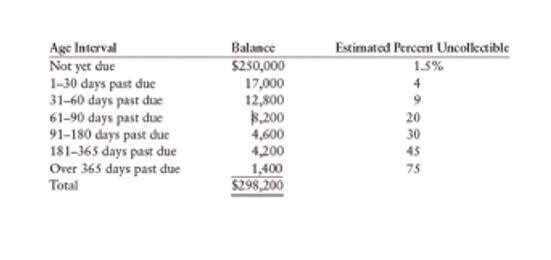
Understanding how to find total manufacturing costs allows businesses to maintain competitiveness and achieve sustainable growth. Regularly updating and reviewing costs will further enhance your overall cost efficiency. Prioritize precise calculations to keep your business financially healthy and optimized. To determine the total manufacturing cost for the production of your finished product, add the direct materials cost with the direct labor costs and the manufacturing overhead costs. Manufacturing overhead is any costs related to the manufacturing of a product that isn’t direct materials costs or labor costs. These can include indirect labor costs, such as wages for supervisors and the material handling team.
How To Track Business Expenses: A Comprehensive Guide
- And for craft brewers, their direct material costs would include the yeast, hops and water used.
- This is why raw material inventory and material purchases should only be used to calculate direct material costs.
- These costs can be calculated by summing up all overhead expenses related to the manufacturing process.
- As you can see, by collecting cost data and calculating it accurately, businesses can optimize cost management and set the right price for their products to gain a competitive advantage.
- Types of transport, such as flatbed trailers for large machinery, are vital when accommodating unique equipment sizes.
- Discover what a bonded warehouse is, how it operates, and its advantages for businesses.
It is good practice to regularly evaluate your supply chain and to identify opportunities for improvement. Take advantage of any bulk-buy discounts or seasonal supply-side surplus to guard against off-season price increases. Understand what a lot number is, how to interpret it, and its importance in inventory management. Adjusted COGS accounts for additional factors like inventory write-offs, shrinkage, or manufacturing adjustments. Once calculated, COGS appears as unearned revenue a direct expense below revenue on the income statement, impacting gross profit. We are aware of few businesses, that tracks a small thread and amount of adhesive that are used in the assembly of Machines components.

Example #2: Direct labor
For manufacturers, calculating COGS is possible only after finding the value of COGM. If all of the goods finished during a period were also sold, COGS and COGM would equal each other. The total manufacturing cost formula is a simple equation in which all of these are added together. Total manufacturing cost is a financial metric that expresses the total amount of funds spent on all production activities during a financial period. In plain terms, it is the total cost a company spends on manufacturing its products. As such, calculating TMC precisely is invaluable for anyone looking to gain more insight into their manufacturing cost accounting fundamentals.

Profitability analysis

Before work hits the production line, one must know how to calculate manufacturing cost. In this example, the total production costs are $900 per month in fixed expenses plus $10 in variable expenses for each widget produced. After subtracting the manufacturing cost of $10, each widget makes $90 for the business. Different cost allocation methods, such as activity-based costing (ABC), can provide more accurate cost information by tracing overhead costs to specific activities. This method can be particularly useful in complex manufacturing environments. Managing Cost of Goods Sold (COGS) manually can be time-consuming and prone to errors, especially as businesses grow.

What factors are related to manufacturing costs?
Indirect costs are likely to be fixed costs that include rent, insurance, quality control costs, depreciation, and the total manufacturing cost formula salaries of production supervisors and managers. The cost of labor includes employee pay, benefits, labor taxes and contributions, and workers’ compensation insurance. You can calculate labor costs in several ways, such as per hour or per product. Keep reading to learn how to calculate total manufacturing cost, how to use the formula, and why it matters. As you can see, manufacturing costs and production costs are closely linked.
- Accurately calculating total manufacturing costs is essential for determining product pricing, managing resources, and maximizing profitability.
- But they also serve as a means of monitoring labor costs to make sure you’re not overspending your budget.
- Accurately calculating total manufacturing costs is essential for profitability.
- Before calculating the direct labour costs per unit you need to know how to calculate the direct hourly labour rate and direct labour hours.
- Producing too much stock in advance means you are spending a lot more on direct material costs.
- When companies regularly track the total manufacturing cost, they get a better idea of areas to save expenses and eliminate wasteful spending.
- The higher the production-related expenses, the narrower your profit margins are likely to be.
Get HVI AppInspection And Maintenance Management Software

Ultimately, it’s all about understanding where your expenses are coming from, managing them effectively, and making smart decisions that lead to profitability. In fact, you already know that labor costs can spiral out of control if you don’t meticulously monitor them. Another commonly used term for manufacturing costs is product costs, which also refer to the costs of manufacturing a product. Here are some frequently asked questions (FAQs) and answers that address key concepts related to manufacturing costs. With a breakup of all the costs of manufacturing, management can decide whether it is more profitable to purchase certain parts or materials from a vendor or manufacture them in-house. For instance, let’s say the hourly rate a manufacturing company pays to its employees is $30.
Tracking the number of hours each employee works on the production line can be tricky. This is where a manufacturing time tracking app, such as Clockify, comes in handy. To calculate this, divide Accounting For Architects the number of units produced by the number of hours needed to produce them.
How COGS work in manufacturing
Manufacturing engineers work at the intersection of engineering, business, and management to create efficient and effective manufacturing processes. They play a crucial role in transforming raw materials into finished products that meet quality standards and customer expectations. Understanding the total manufacturing cost (TMC) is essential for any business with production-based operations. This financial metric gives businesses a detailed picture of their production expenses, leading to more informed decision-making and better financial management. Having a direct impact on the cost of goods sold (COGS), gross margins, and the ultimate net profit, total manufacturing cost is a critical metric. When monitored closely, it can help identify inefficiencies and improve business outcomes.